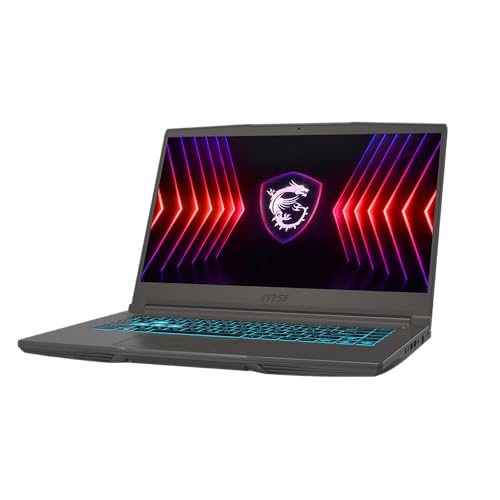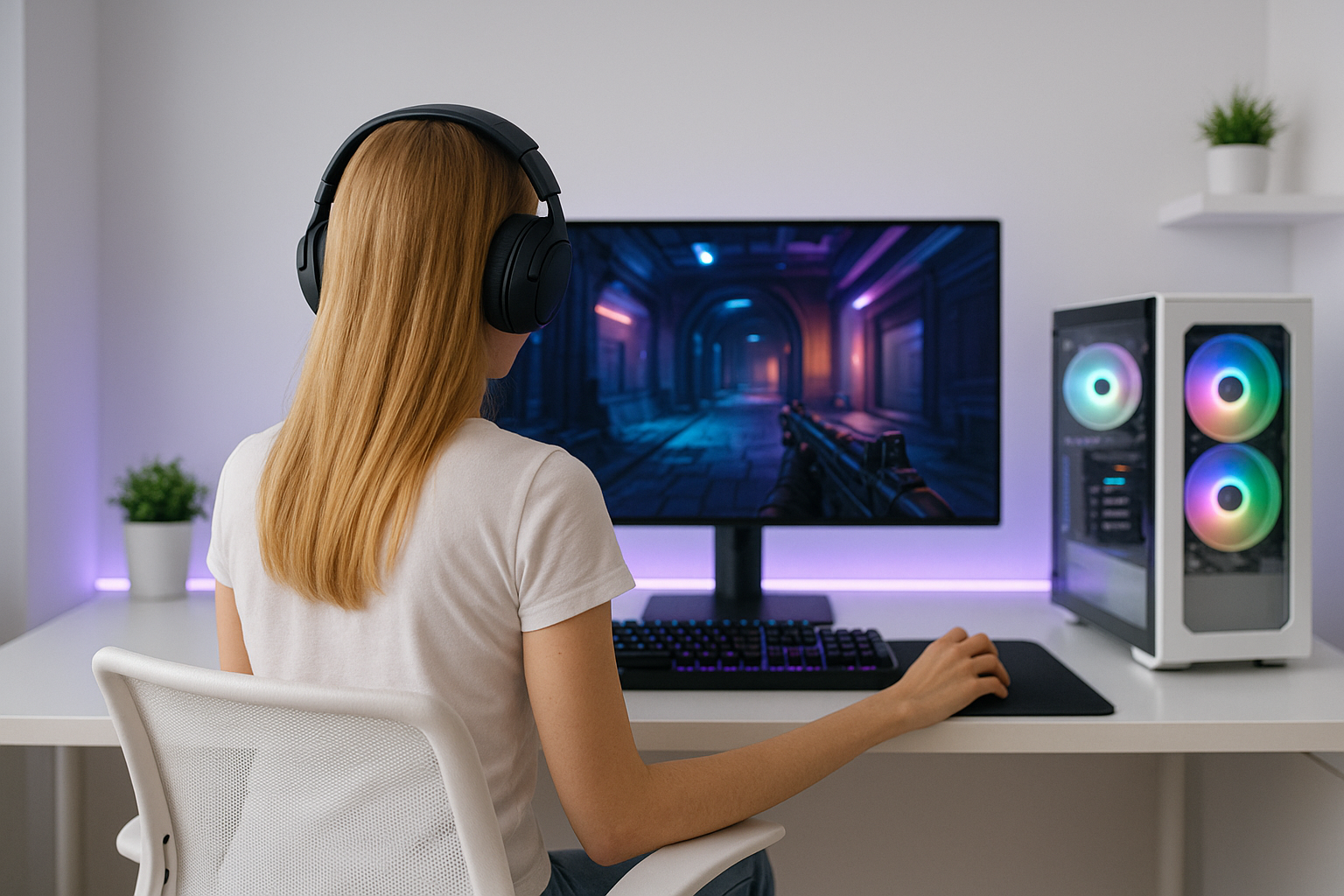
Is it worth it?
If you’ve been itching to play modern PC games at smooth frame rates without spending four figures, this 15.6-inch, 144 Hz MSI rig hits that sweet spot. It’s built for students, new creators, and competitive gamers who want fast 1080p performance in a backpack-friendly chassis. The combo of a 13th‑gen Intel Core i5 and GeForce RTX 3050 tackles esports titles with headroom to spare and even dips into ray‑traced games with DLSS. But the real hook is how it turns a budget into a responsive, low‑latency experience that actually feels premium where it counts—speed, thermals, and that buttery 144 Hz panel.
After a week of daily use—classes by day, gaming by night—my verdict is clear: this is a smart buy for anyone who prioritizes fluid 1080p gaming and portability over marathon battery life. If you mostly play plugged in, you’ll love the snappy feel and upgrade-friendly design; if you need an all‑day work battery, look elsewhere. The surprise for me wasn’t raw power (which I expected) but how much the 144 Hz screen and DLSS elevate the experience at this price. I’ll explain where it shines, where it compromises, and who should skip it—because a slick deal isn’t a deal if it doesn’t fit your use case.
Specifications
| Brand | MSI |
| Model | GF63 |
| CPU | Intel Core i5-13420H |
| GPU | NVIDIA GeForce RTX 3050 4GB GDDR6 |
| Display | 15.6-inch 1920×1080 144 Hz IPS |
| Memory | 16 GB DDR4 |
| Storage | 512 GB NVMe SSD |
| Dimensions | 14.1 × 10 × 0.9 inches. |
| User Score | 4.7 ⭐ (14 reviews) |
| Price | approx. 610$ Check 🛒 |
Key Features

144 Hz Full HD display
A 15.6-inch 1080p IPS panel running at 144 Hz makes every motion feel immediate, from flick shots to fast scrolling. The high refresh rate reduces perceived blur and improves input feedback, which matters far more in games than raw resolution at this price. In practice, esports titles like Fortnite and Valorant benefit the most; you can aim and track targets more precisely when frames match the panel’s refresh. Even outside games, the desktop feels “snappier,” making long study or work sessions easier on the eyes. If you’re coming from a 60 Hz screen, the difference is night and day—this single feature is a huge reason to choose this configuration.
GeForce RTX 3050 with DLSS
The RTX 3050 brings hardware-accelerated ray tracing and tensor cores for DLSS, NVIDIA’s AI upscaling that boosts frame rates while preserving sharpness. It’s not a maxed-out GPU, but at 1080p it hits a sweet spot for competitive and story-driven games alike. DLSS matters because it effectively stretches the GPU’s legs—render at a lower internal resolution, then reconstruct to near-native quality. That’s why you can keep higher settings or ray-traced effects on without tanking performance. Real-world example: switch DLSS to Performance in demanding titles to jump from choppy to smooth, keeping frame times stable for a better feel under the mouse.
13th‑gen Intel Core i5 performance
The Intel Core i5‑13420H pairs Performance and Efficient cores (per Intel Ark) for a responsive desktop and snappy compile/encode times in light creator work. It’s built for gaming, classwork, and everyday multitasking without the price of an i7. What this means: the CPU won’t bottleneck the RTX 3050 in most 1080p scenarios, and it handles dozens of Chrome tabs alongside Discord, Spotify, and OBS with minimal stutter when tuned properly. If you edit short 1080p videos or stream on the side, it’s capable. For heavy 4K production, you’d want a higher‑tier CPU/GPU combo.
Thin-and-light chassis
At roughly 0.9 inches thick, this rig slides into a standard backpack and doesn’t feel like a cinder block on your commute. The brushed finish looks professional, and the deck has just enough stiffness for confident typing. A thinner profile does mean less space for a giant battery, but MSI balances thermals and portability so it performs on a desk and travels easily between classes or offices. Treat the hinge with some care—open from the center and avoid torque on the corners—to keep it feeling tight over time.
Easy upgrades for long-term value
Two SODIMM slots and NVMe storage make memory and drive upgrades straightforward. Some units also include a 2.5-inch SATA bay; availability depends on the exact SKU, so verify before purchasing parts. Upgrading RAM to 32 GB smooths out multitasking and creator apps, while a second SSD keeps your game library local without juggling external drives. This flexibility is rare at the price and lets you extend the laptop’s lifespan rather than replacing it early.
Cooling tuned for real-world gaming
Dual-fan cooling pulls heat away from the CPU/GPU and exhausts out the rear, keeping sustained clocks stable in longer sessions. Under load, you’ll hear a steady airflow rather than a high-pitched whine. Good airflow management matters more than peak numbers; it prevents sudden drops in performance mid‑match and keeps the keyboard comfortable. Use a slim stand or prop the back edge by a few millimeters to noticeably improve intake and reduce fan RPM during extended play.
Firsthand Experience
Unboxing was refreshingly simple: laptop, 150 W-ish power brick, and quick-start paperwork. The chassis has that familiar GF-series brushed-metal look—subtle enough for a classroom or office. Lifting the lid one‑handed reveals minimal flex, though I did notice the hinge has a lighter tension than some bulkier gaming notebooks. Takeaway: handle the lid with care and avoid twisting the corners; otherwise, it feels solid on a desk.
Setup took under 10 minutes to Windows 11 Home, and I immediately toggled Nvidia’s per‑game settings and the Windows power plan to Balanced for daily use and High Performance for gaming. Out of the box, the 144 Hz panel is a huge quality‑of‑life upgrade—cursor motion and scrolling feel frictionless. Colors look IPS‑typical (not creator‑grade), but there’s no weird color shift when viewing off‑axis. Brightness is adequate for indoor use; near a sunny window, I nudged it to max to keep reflections manageable.
Gaming plugged in is where this machine earns its keep. In Fortnite (1080p Competitive/Medium), I hovered around triple‑digit frame rates, which actually lets you leverage the 144 Hz screen. World of Tanks ran smoothly with high settings; fast‑paced panning stayed sharp, with no smear that you’d see on 60 Hz panels. In ray‑traced titles, I leaned on DLSS Performance to stay above 60 fps—exact results vary by game, but the RTX 3050’s DLSS support genuinely extends its life for 1080p gaming (per NVIDIA’s own guidance on DLSS scaling).
Thermals and noise are well‑tuned for the class. During extended gaming sessions, fans spin up to an audible whoosh—noticeable but not whiny. The WASD area stays warm, not hot, while the center top deck gets toasty under sustained loads. I didn’t observe thermal throttling that killed performance; the CPU and GPU held their clocks reliably as long as I kept the rear vents unobstructed. A simple laptop stand improved airflow and fan tone.
Battery life is the compromise. Light use (Wi‑Fi browsing, streaming, docs) gave me around 4–5 hours with the refresh rate set to 60 Hz and brightness at ~40–50%. Gaming on battery, however, drops quickly—plan for 1–1.5 hours and far lower frame rates. The community feedback aligns with my experience: it’s built to be plugged in for best performance. If you roam campus, toss the compact charger in your bag.
Upgrades are a bright spot. Accessing internals requires removing the bottom panel (use a proper Phillips driver and plastic pry tool). You get two SODIMM slots (16 GB installed, supports more), an M.2 NVMe slot for storage, and on some configurations a 2.5‑inch SATA bay—this can vary by SKU, so check before buying parts. Expanding RAM to 32 GB helps with heavy Chrome tabbing and creative apps; a second SSD is ideal for a growing Steam library. This is the kind of flexibility that extends the laptop’s useful life without breaking the bank.
Pros and Cons
Customer Reviews
Early buyer sentiment is upbeat: people praise the smooth gaming experience and overall speed for the money, while acknowledging trade‑offs like mediocre battery life and a hinge that feels lighter than beefier gaming tanks. With relatively few reviews so far, the tone is encouraging but still settling as more long‑term owners chime in.
Perfect for my son’s gaming—he says it’s fast and the sound is better than expected for a thin laptop
Good value and very upgradeable, but don’t abuse the hinge and expect to stay plugged in for best performance
Battery life sucks, lasts way less when gaming
144 Hz screen is a game-changer and the keyboard feels nice, speakers are fine but not amazing
Runs Fortnite and Rocket League smoothly at 1080p, setup was quick and it’s light enough for campus.
Comparison
Against the Acer Nitro 5 in similar price brackets, this MSI feels lighter and more portable, with a cleaner look and a higher‑refresh screen option commonly available at the same tier. The Nitro often wins on battery capacity and sometimes on port selection, but it’s heavier; if you move between classes or offices daily, the GF63’s form factor is easier to live with. Performance between RTX 3050 variants is close—expect minor differences based on power limits rather than brand.
Compared to Lenovo’s LOQ or IdeaPad Gaming lines, configurations with RTX 4050 on the Lenovo side can deliver a notable uplift in ray tracing and raster performance if you catch a good sale. However, those models generally cost more and weigh more. If your budget sits firmly under the four‑figure mark and you want the “fast where it counts” experience, the GF63 with a 144 Hz panel is still a great 1080p pick.
Stacked up against ASUS TUF A15/15.6-inch options with RTX 4060, the ASUS wins outright in raw graphics muscle and often offers better sustained performance and sturdier build. But it typically lives in a higher price tier and adds weight. If you’re a creator or competitive player who wants maximum frames in newer titles and can stretch the budget, a 4060 system is the step‑up. If you want to hit smooth 1080p now without overspending, the MSI’s value proposition holds.
Finally, if you’re torn between a handheld PC/console and a laptop, remember the 144 Hz screen and full Windows environment here—more flexible for school/work and easier to upgrade over time. Handhelds win on couch convenience and battery life in some cases, but they won’t match a plugged‑in RTX laptop for high‑fps 1080p gaming on a larger display.
Frequently Asked Questions
- Can I upgrade the RAM and storage myself?
- Yes, there are two SODIMM slots and an NVMe slot
- How long does the battery last while gaming?
- Expect roughly 1–1.5 hours on battery with reduced performance
- Will it run modern AAA games at 1080p?
- Yes, with settings tuned to Medium/High and DLSS enabled where available
- Does it support external monitors at high refresh rates?
- Yes, you can connect external displays via HDMI/USB‑C (model dependent)
Conclusion
The key takeaways: this MSI configuration nails smooth 1080p gaming thanks to its 144 Hz display, RTX 3050 with DLSS, and a punchy 13th‑gen i5. It’s portable, upgrade-friendly, and quick to set up. The trade‑offs are clear—battery life is short under load, the hinge feels lighter than tank‑class rivals, and 4 GB of VRAM caps ultra textures in the newest games. If you can live on the charger during play and want a responsive screen without overspending, it delivers where it matters most.
Who should buy it: students, commuters, and competitive gamers who value high‑fps 1080p and a thin profile under a typical $700–$1,000 range depending on RAM/SSD options and deals. Who should skip it: creators pushing heavy 4K timelines, travelers who need 8–10 hours unplugged, or users who demand a tank‑grade chassis. In its price lane, the performance‑per‑dollar is compelling; catch a sale and it can be a steal. Check the links for current pricing—discounts swing quickly, and a good promo can make this one of the best entry‑level gaming buys right now.



